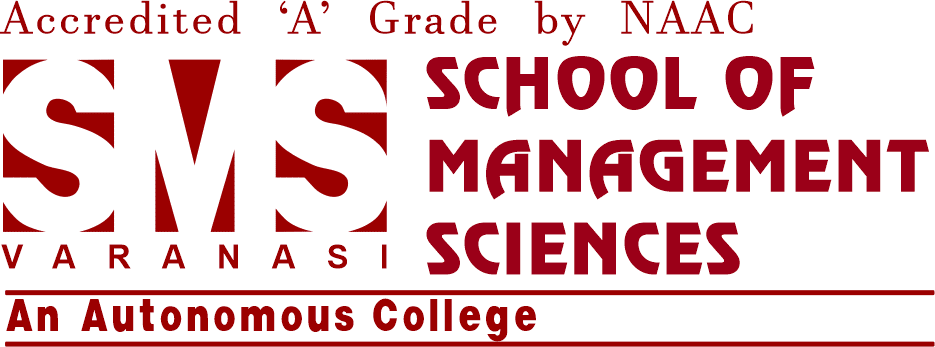
Are you driven by the passion for a cause and want to do an MBA with a focus on Nonprofit Management? At SMS Varanasi, we do not offer you a Nonprofit Management MBA as such but we do offer you all the courses to equip you with the business acumen and strategic management skills essential for leading a successful and sustainable nonprofit organization.
The world of nonprofits is driven by a deep commitment to social change and strategic management – the same core principles that power successful businesses. You need to master strategic planning, fundraising, negotiation, social enterprise development, and how to maintain sustainability during economic downturns to ensure that your future nonprofit not only survives but thrives.
Let’s explore some practical strategic management tips tailored to the unique context of nonprofit organizations:
1. Embrace Strategic Planning

An MBA program from SMS Varanasi will help you master strategic planning and it’s a crucial step for nonprofits. Strategic management starts with planning and you need to make sure that your NPO (non-profit organisation):
- Aligns actions with goals: A strategic plan ensures everyone is working towards shared objectives.
- Adapts to changes: A plan helps nonprofits proactively respond to internal and external shifts.
- Reaches its true potential: Identifies priorities and resource allocation for optimal impact.
There are different strategic planning models you may choose from depending on the nonprofit’s current needs:
- Standard: It focuses on long-term goals and is best suited for stable environments.
- Issues-Based: To help get the organisation back on track, this approach means addressing internal challenges.
- Organic: This approach is best for uncertain environments and means to leverage team members’ individual strengths.
- Real-Time: This strategic planning model focuses on short-term objectives and is best suited for crisis management.
- Alignment: This model helps to improve collaboration and communication between departments.
The 5-Step Strategic Planning Process involves:
- Set Fundraising Targets: Determine how much funding you need, and the strategies you’ll employ (individual giving, grants, etc.).
- Gather Stakeholder Input: Get feedback on your plan from board members, staff, advisors, and partners to ensure it’s realistic and supported.
- Outline Key Strategies: Consider major gifts, donor stewardship, new donor acquisition, online fundraising, and more. Prioritise areas where your nonprofit has the most potential.
- Establish SMART Goals: Set goals that are Specific, Measurable, Attainable, Realistic, and Time-bound.
- Assign Roles & Automate: Define clear responsibilities for team members. Consider investing in nonprofit software to streamline tasks and free up time for strategic initiatives.
These days, there is software you can use for donor management and fundraising. You can use it to analyse data and identify growth areas, track progress and assign accountability, segment donors for personalised outreach, identify prospects for major gifts and recurring donations, and more.
2. Find Ways for Financial Stability During Economic Downturns

Nonprofit management often involves ensuring the financial sustainability of your organisation, especially during economic downturns. Some of the top strategic management strategies you can employ to continue providing essential services during economic slumps are:
- Diversify Funding: Avoid relying on a single income source. Explore individual donations, grants, corporate partnerships, and earned income streams to reduce financial vulnerability.
- Build Capacity: Invest in staff development, technological upgrades, and strong infrastructure to ensure efficiency and adaptability.
- Measure Impact: Track and quantify your organisation’s impact. Use this data to attract donors and demonstrate your value to the community.
- Foster Collaborations: Partner with like-minded nonprofits, businesses, or government entities to expand your reach, pool resources, and increase your impact potential.
- Endowment Building: Create an endowment fund to secure long-term financial stability and allow for planning beyond immediate economic fluctuations.
- Strategic Planning: Continually reassess and adapt your plans to navigate challenges, stay aligned with your mission, and seize opportunities.
By implementing these strategies, MBA graduates can make sure that their organisation has the resilience to continue its vital work, even during difficult economic times.
3. Master Negotiation

Negotiation is an essential skill for nonprofit leaders. Whether securing funding, managing partnerships, or staffing your team, successful agreements benefit your cause. Reframe negotiation as a collaborative opportunity to achieve mutually beneficial solutions, not a conflict to be avoided.
Here’s how to approach negotiations with confidence and success:
- Prioritise Relationships: Start by building rapport and focus on shared values. Integrity and trust are vital for long-term success.
- Do Your Homework: Research thoroughly, understand your options, and define clear objectives.
- Know Your BATNA, Goals, and Bottom Line: Determine your best alternative (BATNA) if no deal is reached. Set ambitious but realistic goals, and know your absolute walk-away point.
- Listen and Expand the Pie: Seek common ground. Explore ways to create value for both parties rather than fighting over limited resources.
- Make the First Offer: Don’t be afraid to anchor the negotiation with a well-researched, ambitious opening proposal.
- Discuss Issues as a Package: Avoid piecemeal agreements. Address everything together, finding creative solutions for any sticking points.
- Concede Strategically: Each concession should be made with a clear purpose and an expectation of something in return.
- Maintain a Positive End: Express appreciation and leave a good impression to strengthen relationships for future collaboration.
4. Top Fundraising Strategies for Your Non-Profit Organisation
When it comes to strategic management for non-profits, you must realise that fundraising is an important aspect – not only for generating revenue but also for building awareness and donor relationships. Here are some fundraising tips for MBA students who want to go into nonprofit management.
Fundraising Methods Popular These Days
- Merchandise: Offer branded items (t-shirts, mugs, etc.) as “thank you” gifts for donations (for example, ‘Be Human’ merchandise). This can solidify your brand and keep your mission visible.
- Auctions: Procure items or experiences donors would be excited to bid on. Both in-person and online silent auctions can be successful.
- Legacy Gifts: While less predictable, these planned long-term donations can be a significant source of income. Provide donors with resources and recognition to encourage this type of giving.
- Social Media Challenges: Design a simple, viral challenge like the Ice Bucket Challenge to raise awareness and funds (though success is hard to guarantee).
You need to choose the right method depending on:
- Your Audience: What appeals to them?
- Budget: How much can you allocate?
- Fundraising Goal: Set a clear target.
- Timeline: Do you have time to execute your plan?
Do not forget to use fundraising efforts as an opportunity to build donor relationships. You should send personalized thank-yous and updates to donors to nurture long-term support from them.
Also, make donations easy and accessible for everyone. Allow multiple donation options to suit donors of varied preferences. An annual event or recurring donations are a good idea too to raise funds for your non-profit on an ongoing basis.
5. Establish a Social Enterprise to Make Your NGO Sustainable
We nurture our MBA students to establish businesses. Social enterprises are a great way for nonprofits to achieve greater sustainability and create earned income streams to support their missions. You can set up a social enterprise by using your organisation’s strengths to solve a social or environmental problem related to your field.
Here are some strategic management tips for setting up a viable and mission-aligned social enterprise:
- Write down your strengths: List all your unique assets (facilities, expertise, networks, etc.). Don’t judge at this stage, focus on quantity.
- Evaluate them: Rank your top assets based on uniqueness, value to others, and connection to your mission.
- Identify opportunities: Brainstorm ways to leverage each top asset to create value for customers.
- Assess them: Evaluate each opportunity’s ease of implementation, mission fit, and potential profitability.
Remember, you need a good idea for your social enterprise that has the potential to evolve into a sustainable business venture. Once you’ve narrowed your options, conduct a feasibility study for your top choice. If promising, develop a detailed business plan to guide your implementation.
Contact us at SMS Varanasi’s Centre For Entrepreneurship, Innovation & Skill Development (CEISD) to learn more about Nonprofit Management and how you can use the knowledge and skills you are gaining as an MBA student to set up a social enterprise.





